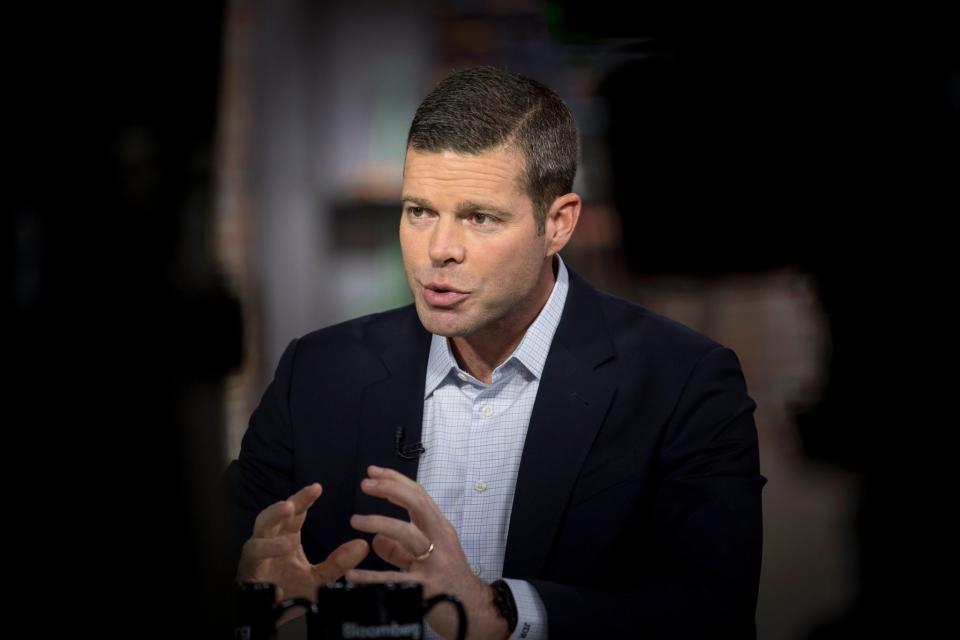Walmart is becoming the new Amazon as customers make smaller, but frequent purchases: ‘That’s a trend that’s not going to reverse,’ CFO says

As the battle for e-commerce dominance wages on, Walmart CFO John David Rainey says the company has the tools to edge out competitors. The Arkansas-based retail giant has seen more frequent, yet smaller, orders through its Walmart+ membership program, with most consumers preferring delivery, all ingredients Amazon hailed as part of its secret sauce to becoming the U.S.’s biggest online retailer.
“We've seen delivery surpass pickup, and I believe that that's a trend that's not going to reverse, really speaks to how customers are thinking about this convenience factor for us,” Rainey said Wednesday at the Evercore ISI Consumer & Retail Conference. “We're simply getting better at our ability to serve our customers that way.”
Walmart+ customers, who are able to get free deliveries and member prices through the service resembling Amazon Prime, spend twice as much as average Walmart customers, he added, and they shop more frequently and with smaller orders, sometimes only buying one or two items at a time.
The membership program has been a boon to Walmart as its revenue soared 6% to $161.5 billion last quarter, in large part to its 21% growth in e-commerce sales, led by wealthier consumers looking for convenience and speed.
Rainey said earlier this month that Walmart expects its e-commerce division, which includes advertising and consumer data business, to become profitable within the next two years. Sam’s Club, the company’s membership warehouse club chain, is already profitable in e-commerce.
With its boom in online delivery orders, Walmart has its sights set on dethroning Amazon as the country’s top e-commerce site. Amazon has coasted on customers’ frequent orders—72 per year on average, or about once or twice a week—with items tallying an average of $37 per order, amounting to an annual spend of $2,662. Almost all Amazon shoppers are repeat customers.
The delivery blitz
The delivery speed Rainey touted last week has become the focal point of the battle for e-commerce authority as the pandemic created tremendous demand for quick and convenient deliveries. While online orders took almost two weeks to be delivered in January 2020, as of May 2023, orders took less than three days on average to arrive at a customer’s doorstep, according to supply-chain consulting platform Project44’s State of Last Mile Delivery report from June 2023.
Amazon announced in April its Prime delivery speeds were the fastest in company history, with 60% of Prime orders to the 60 biggest U.S. cities arriving the same or next day. CEO Andy Jassy said in an April 2023 letter to shareholders the company would shift from a national to regional fulfillment model, scaling back warehouses and investing in hubs similarly used by FedEd and UPS in an effort to move inventory closer to consumers.
Target announced in February that year it would invest $100 million over three years in expanding next-day deliveries. Even clothing brands like American Eagle and Nordstrom have tried to optimize their e-commerce operations by improving delivery times.
While companies are going all-in on delivery efficiency, they’re on the razor’s edge, as making deliveries any faster could lose them money in the long run. Air freight is expensive and limited by traffic, which has already pushed shippers like UPS to cut back air cargo operations in favor of cheaper, but slower, ground transportation.
“We can be in that three-to-five-day click-to-deliver timeline,” Laura Ritchey, COO of e-commerce fulfillment company Radial, told Retail Dive in June 2023. “It gets really expensive to go faster than that.”
This story was originally featured on Fortune.com

 Yahoo Finance
Yahoo Finance